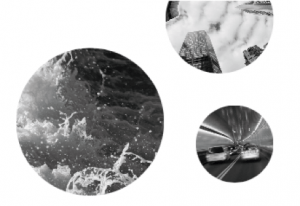
1nm * Cleanroom * Semiconductor * ALD * Sputtering * Lithography * NanoparticleRelease * ParticleFormation * nCNC * PSM * YourResearch
Manufacturing in a cleanroom environment does not mean no nanoparticles
Researchers from the University of Helsinki measured sub-2 nm particles in industrial cleanrooms during different manufacturing and operational processes. They observed concentrations 3-5 orders of magnitude higher than the limits set for 100 nm particles.
Cleanrooms are categorized by e.g. the ISO 14644 standard, which defines the number of aerosol particles of different sizes accepted for a certain cleanroom class. For example, the air of a Class 6 cleanroom should contain less than 1 cm-3 (106 m-3) of 100 nm particles, Class 5 less than 0.1 cm-3 (105 m-3), and Class 4 less than 0.01 cm-3 (104 m-3).
Lauri Ahonen, together with his colleagues from the University of Helsinki and Beneq Oy, measured number concentrations of 1.1 nm – 2500 nm aerosol particles in industrial production facilities. They used an nCNC system, and a CPC with a 7 nm cut-off. They studied a Class 6 Atomic Layer Deposition processing space, mainly used for manufacturing of thin film electroluminescent displays; a Class 5 Indium Tin Oxide -sputtering space (physical vapour deposition); and a Class 4 Lithography site.
The researchers detected a constant pool of clusters smaller than 1.4 nm in all the studied cleanroom environments. Most of the time the number concentration of particles larger than 1.4 nm was low, but several occasions with higher concentrations were observed. In the Class 6 area concentrations as high as 105 cm-3 were seen during morning maintenance periods, and the sub-2 nm particles were seen to grow into larger sizes. In the Class 5 and Class 4 cleanrooms the air was changed so efficiently that high concentrations were observed only for short periods at a time, and no growth was detected. Still, on those occasions nanoparticle concentrations were 3-4 orders of magnitude higher than the limits defined for 100 nm particles.
For the measurements, the researchers calibrated the nCNC using three different metal chloride nano particles. This was done to minimize the possible effect of the particle composition on the defined activation size.
The part of the cleanroom standard addressing monitoring of air cleanliness by nanoscale particle concentration, is currently under development. This study shows that it is needed.
To read the article by Ahonen et al., please visit the website Taylor & Francis Online: Ahonen et al. 2017 First measurements of the number size distribution of 1 – 2 nm aerosol particles released from manufacturing process in a cleanroom environment. Aerosol Sci. Technol., vol. 51, issue 6, pp. 685-693. DOI: 10.1080/02786826.2017.1292347
For more information on aerosol research at the University of Helsinki, please visit their website: Division of Atmospheric Sciences at the Department of Physics

To subscribe to the Airmodus Newsletter, simply email info@airmodus.com